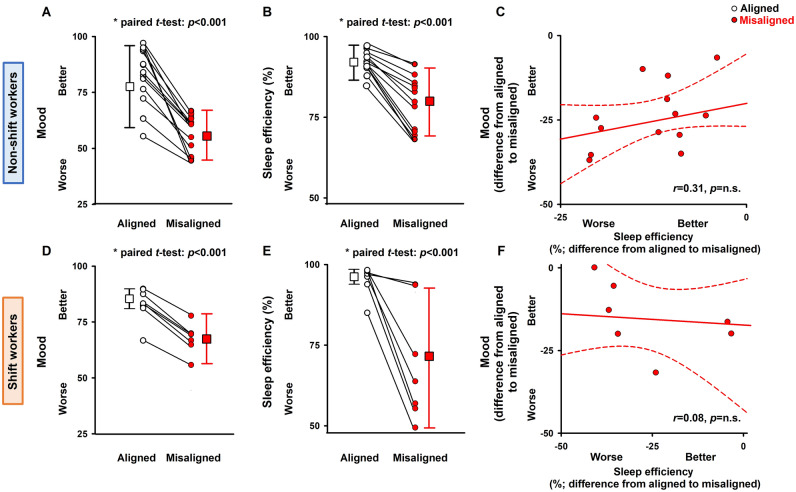Figure 5.
Sleep efficiency does not predict mood and well-being impairment during circadian misalignment. (A–C) In non-shift workers (n = 14), mood levels (A) and sleep efficiency (B) were significantly reduced during circadian misalignment as compared to circadian alignment. (C) Linear regression models indicate that sleep efficiency did not predict mood levels in the circadian alignment or misalignment conditions. (D–F) In shift workers (n = 7), mood levels (D) and sleep efficiency (E) were significantly reduced during circadian misalignment. (F) Linear regression models indicate that sleep efficiency did not predict mood levels in either circadian conditions (difference from circadian alignment to misalignment). Data presented as circles indicate individuals, and connecting lines correspond to results from the same individual for circadian alignment and misalignment. Squares and whiskers correspond, respectively, to median and interquartile ranges (minimum and maximum quartiles [1.5 × interquartile range]) to illustrate data dispersion; p-values: significance of the paired t-tests for A,B,D and E and for the linear regression analyses shown in C and F.

